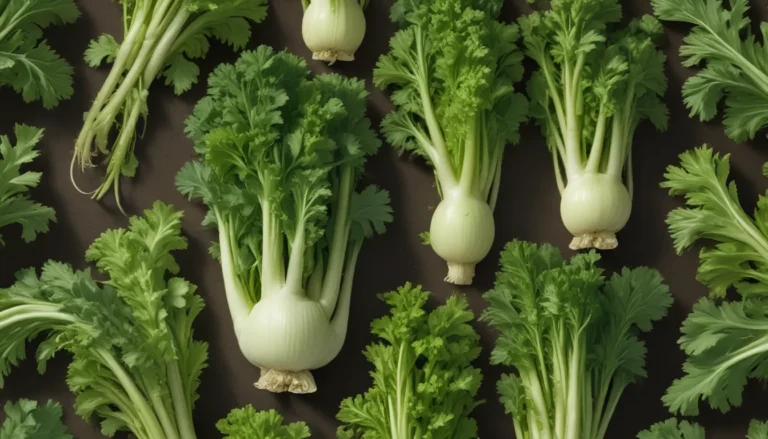The Complete Guide to Growing and Caring for Plum Trees

Plum trees are like the reliable friend in your garden – always there, easygoing, and happy-go-lucky. They come in different sizes, with a variety of sweet, juicy fruits to offer. Whether it’s the showy blossoms in the spring or the flavorful fruits in the fall, plum trees are a delightful addition to any garden.
In this detailed guide, we’ll cover everything you need to know to grow and care for plum trees successfully. From cultivation and propagation to harvesting and preserving, we’ve got you covered. Let’s dive in and explore the wonderful world of plum trees.
What You’ll Learn
- Cultivation and History: Discover the fascinating history and origins of plum trees.
- Propagation: Learn the different methods for propagating plum trees.
- How to Grow: Find out the essential steps for growing healthy plum trees.
- Growing Tips: Get valuable tips to help your plum trees thrive.
- Pruning and Maintenance: Learn about pruning techniques and maintenance practices.
- Species and Cultivars to Select: Explore different plum tree species and recommended cultivars.
- Managing Pests and Disease: Discover common pests and diseases that can affect plum trees.
- Harvesting: Learn how to harvest plums at the peak of ripeness.
- Preserving: Explore different ways to preserve plums for extended enjoyment.
- Recipes and Cooking Ideas: Get creative with delicious plum recipes and cooking ideas.
- Quick Reference Growing Guide: A handy reference for essential information on plum tree care.
Cultivation and History
Plums have a rich history dating back thousands of years. Originally from the Caucasus Mountains, plums have been cultivated by ancient civilizations like the Romans. As settlers spread plums to different parts of the world, they became a popular fruit tree.
Plum trees come in different varieties – Asian, European, and hybrid types. While each type has its unique characteristics, the basic growing requirements are similar. It’s essential to choose the right species for effective pollination and fruit production.
Plum Tree Propagation
When it comes to propagating plum trees, planning ahead is crucial. From growing plum trees from seeds to rooting cuttings, there are multiple methods to propagate these fruit trees. Each method has its advantages and considerations, so choose the one that suits your needs and preferences.
How to Grow Plum Trees
Location, sunlight, soil conditions, and watering are essential factors when growing plum trees. Whether you’re planting European, Asian, or American varieties, consider the specific needs of each type. Proper care, including watering, fertilizing, and pruning, will ensure healthy tree growth and abundant fruit production.
Growing Tips:
– Protect trees from blossom-killing frosts by planting them in the right location.
– Keep young trees watered well to establish healthy roots.
– Feed young trees with a balanced fertilizer for optimal growth.
Pruning and Maintenance
Pruning is a critical aspect of plum tree care to maintain tree structure, promote fruit production, and prevent disease. Different species require specific pruning techniques, so it’s essential to understand the requirements of your plum tree variety. Regular maintenance, including removing dead or diseased branches, is essential for tree health.
Plum Tree Species and Cultivars to Select
Explore different plum tree species and recommended cultivars to choose the right tree for your garden. From European sweet plums to American hardy varieties, there are plenty of options to suit your preferences. Selecting disease-resistant and self-fruitful cultivars can ensure a successful harvest every year.
Recommended Varieties:
– American Plum: Hardy shrub-like trees with small, colorful fruits ideal for jams and ornamental use.
– Brooks: Early ripening Italian plum with sweet and tart flavor profiles.
– Burgundy: Japanese plum variety with dark-skinned, juicy fruits and cold-hardy characteristics.
– Hollywood: Dwarf ornamental plum tree with deep purple foliage and rich sweet fruits.
– Methley: Highly productive Japanese plum with self-fruitful characteristics and disease resistance.
Managing Pests and Disease
Plum trees are susceptible to various pests and diseases, including apple maggots, plum curculios, root-knot nematodes, and wood borers. Implementing integrated pest management strategies, monitoring for pests, and using targeted control methods can help protect your plum trees. Identifying common diseases like black knot, brown rot, and silver leaf early on can prevent severe damage to your trees.
Common Pests and Diseases:
– Herbivores: Rabbits, mice, and deer can damage plum trees by feeding on bark and fruits.
– Insects: Aphids, scale insects, and fruit flies are common pests of plum trees, requiring monitoring and control measures.
– Disease: Black knot, brown rot, and silver leaf are common fungal diseases that can affect plum trees, leading to reduced vigor and fruit production.
Plum Fruit Harvesting
Harvesting ripe plums at the peak of ripeness ensures the best flavor and quality. With different varieties maturing at various times, it’s essential to monitor your plum tree for signs of ripeness. Involving the whole family in the harvesting process can be a fun and rewarding activity, especially with delicious plum-based recipes on the horizon.
Preserving Plums
To extend the shelf life of plums, consider drying, making fruit leather, or canning the fruits. Properly preserved plums can last for months, allowing you to enjoy the harvest throughout the year. Freezing plum pieces for future use in recipes is another excellent preservation method to consider.
Recipes and Cooking Ideas
From sweet desserts to savory dishes, plums are versatile fruits that can be used in a variety of recipes. Explore different plum-based recipes, including galettes, hand pies, jams, and fruit salsas. Whether you’re a baking enthusiast or a culinary novice, there’s a plum recipe to suit your tastes.
Quick Reference Growing Guide:
– Plant Type: Deciduous fruit tree
– Flower/Foliage Color: Pink, white/green
– Hardiness (USDA Zones): 4-9
– Exposure: Full sun
– Spacing: 20 feet, depending on type
– Time to Maturity: 8 years
– Soil pH: 6.0-6.8
– Height: Up to 40 feet
– Spread: Up to 40 feet
– Common Pests and Diseases: Apple maggot, root-knot nematode, plum curculio, wood borer; brown rot, black knot, silver leaf
When the Plum Tree Blooms, the Entire World Blooms
Plum trees are a delightful addition to any garden, offering beautiful blossoms in the spring and flavorful fruits in the fall. With proper care and maintenance, you can enjoy a bountiful harvest of sweet, juicy plums year after year. Whether you’re a seasoned gardener or a beginner, growing plum trees is a rewarding experience that brings beauty and flavor to your outdoor space.
Explore the world of plum trees, try different varieties, and get creative with plum-based recipes. Share your experiences and preferences in the comments below. Let’s celebrate the joy of growing and caring for plum trees together!





